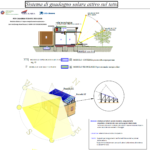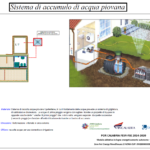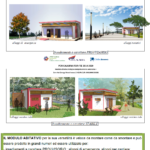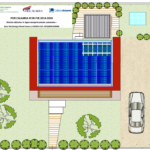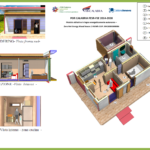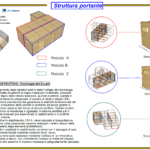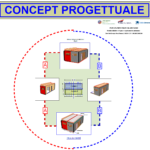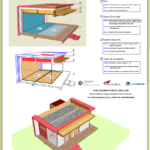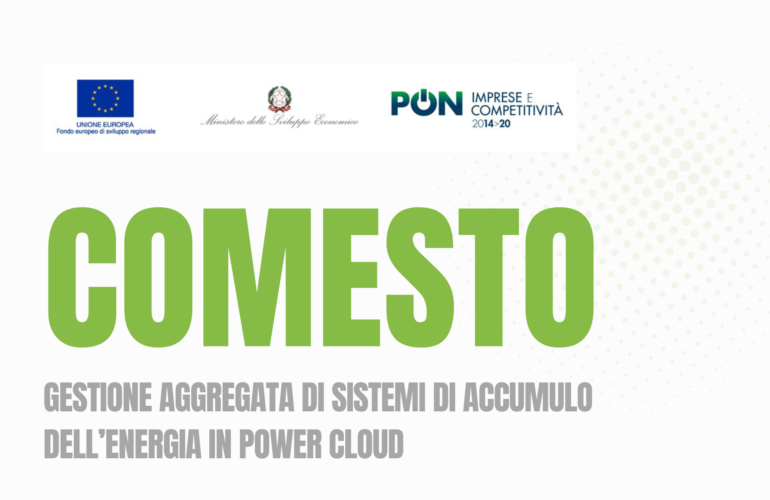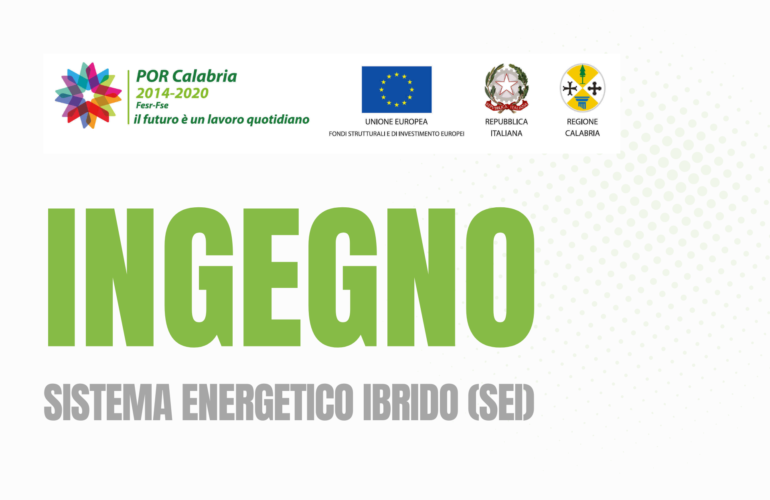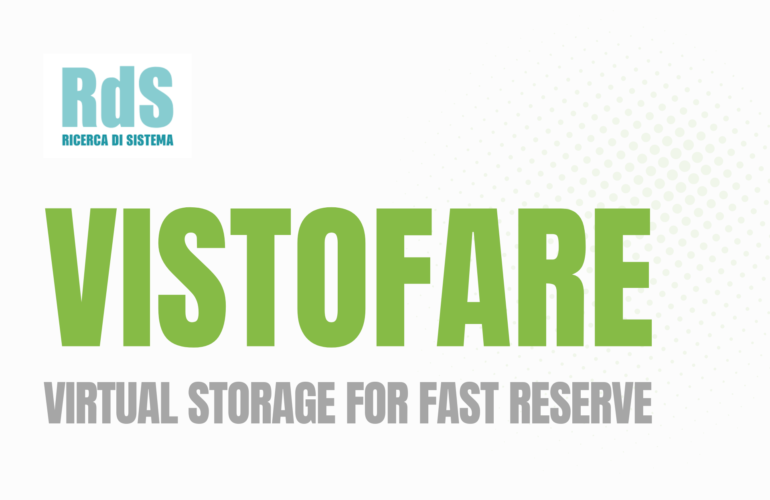DESCRIPTION
The proposed technical solutions will be developed to ensure modularity, flexibility, adaptability, and easy installation and maintenance of the housing modules, both in their structural and plant-engineering components. In particular, modularity and flexibility will be designed to allow the creation of aggregated systems of housing modules for applications such as isolated villages (e.g., in developing nations without network infrastructure), temporary emergency camps, or facilities for sharing energy and water resources, with minimal environmental impact. The proposed housing module solution will also have a significant impact on economic and social well-being, as it reduces the need for network infrastructure, avoiding high costs for upgrading or building new infrastructures and consequently reducing operating and management costs.
Specifically, structural material selection has focused on wood, as it is a technology currently expanding rapidly, despite having ancient origins as a construction material. Wood is capable of fulfilling both the structural function and energy efficiency when used for external cladding. Additionally, its lightweight properties make it ideal for prefabrication and transportation.
To consolidate and validate the results of the industrial research phase, the project will move into an experimental development phase, starting with the construction of a laboratory prototype of the housing module and its control and management system (Phase RI). Following this, a pilot plant (Phase SS) will be developed, consisting of a prefabricated housing module that integrates: Photovoltaic microgeneration system, Electric storage system, Micro-cogeneration system, System for integration, management, and control of energy resources (nanogrid).
Objectives
The final objective of the project will be the definition of the design solution and the construction of a prefabricated housing module, which will incorporate all the following features compared to what is currently available in the reference market:
Scalability based on changing needs and population growth;
Adaptability to different terrains (flat, sloped) and climates (north, center, and south);
Design flexibility and modularity: allows increasing or reducing the volume and surface area of a building according to changing spatial and/or functional needs;
Transportability and lightweight structure: ensures easy transportation and, above all, the ability to minimize volume and footprint of building components;
Minimal environmental impact: the land where the prefabricated module is installed should return to its original state once the module is removed;
Minimal impact on local infrastructure (electricity, gas) or no impact at all in emergency applications;
Environmental compatibility: use of materials and technologies that minimize resource consumption, favoring the use of recycled and/or easily recyclable materials for further reusability;
Energy self-sufficiency (electrical autonomy through renewable systems such as wind and solar energy with battery storage systems, integrated with a heat pump that can operate without a power grid, smart energy management, and load prioritization to automate energy use based on user needs, all managed via home automation system);
Speed and ease of construction and assembly: prefabricated elements designed for quick installation, minimizing the complexity of on-site operations, reducing the required workforce, and significantly shortening the time needed to deliver the housing module to its occupants;
Dismantlability and recyclability: ensuring easy disassembly and reusability of the structure, making the deconstruction process reversible at the end of its service life;
Aggregability: ensuring a spatial arrangement that allows for maximum interaction and resource sharing, both for energy and water, while also ensuring privacy and comfort for both public and private spaces.

